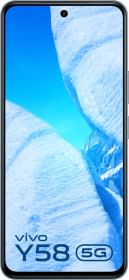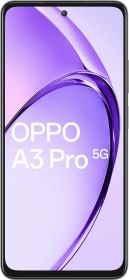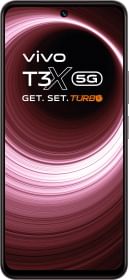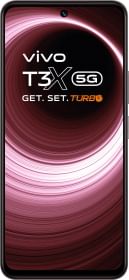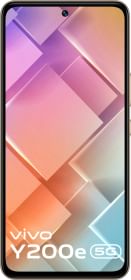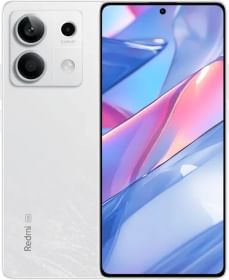If you’ve been following smartphones or consumer tech for a while now, you’ve probably heard the term “Nits.” This is the go-to way to describe how bright a display is. Almost every brand, whether it’s for smartphones, laptops, TVs, or other displays, uses “Nits” to show customers just how bright their screens can get.
Recently, though, these brands have started advertising insanely high brightness numbers like 2,000 nits, 3,000 nits, 4,500 nits, or even 6,000 nits. The problem is that the brightness difference doesn’t seem to be huge in real-life usage.
To justify this, brands have come up with some terms such as Peak Brightness, Local Maximum Brightness, High Maximum Brightness, and Standard Brightness. All of this can feel like deciphering a labyrinth without a map for the average person.
So, what exactly do these terms mean, and what is hiding behind these insanely high brightness Nits numbers? Let us find out in this article.
What is Display Brightness? What is Nits?

Display brightness is all about how bright or dim your screen is. It’s measured in Nits, with higher numbers (usually) meaning a brighter screen. Display brightness is important because it affects how clear and vibrant everything looks on your device, whether you’re indoors or outdoors.
Note that while a higher Nits number may mean a brighter screen, you can’t simply say that a 2,000 Nits display is two times brighter than a 1,000 Nits display. This is because the “Nits” value increases logarithmically and not linearly. Two times the brightness of a 1,000 Nits display would be somewhere around 10,000 Nits or even more.
This is not to say that the difference between a 1,000 Nits and a 2,000 Nits display is negligible. The difference perceived by a human eye between the two should be around 20-25%, which is still a decent amount of brightness increase.
Experts have coined a term for this brightness measure, Perceived Brightness. Basically, it’s the amount of brightness that a human eye can see and perceive. So, why do we even use Nits? Well, it has become an industry standard now, and it helps manufacturers communicate the potential brightness capabilities of their displays “effectively.”
ALSO SEE: Cars With Keyless Entry
Display Brightness: LCD vs. AMOLED

LCD and AMOLED screens have different brightness settings. LCDs and mini LEDs can pump out higher peak brightness, which is great for sunny days when you need to see your screen clearly outside.
LCDs and mini LEDs use a backlight (mini LEDs have multiple of those) to brighten up the liquid crystal to produce colors evenly. Usually, the peak brightness and the high maximum brightness of an LCD display are the same. This is different for mini LEDs, though.
AMOLED screens, though, are known for their deep blacks and punchy colors. Basically, every individual pixel has its own backlight, allowing for more powerful control over brightness. However, due to the physical limitations of the organic materials used in AMOLED displays, they can’t get as bright as LCDs or mini LEDs.
Recently, we’ve seen advancements in both techniques, with micro LEDs for LCDs and Tandem OLEDs for AMOLED/OLEDs. Micro LEDs are still expensive and hard to manufacture, but Tandem OELD seems to be taking over the commercial market soon.
To give you an idea, Tandem OLED is multiple OLED sheets stacked on top of each other, which results in higher brightness, low power consumption, and reduced risk of screen burn-in.
LCDs and mini LEDs are now on the dark side because, even though they might be as bright as Tandem OLED or even brighter, they certainly can’t beat the power efficiency and the individual pixel dimming of Tandem OLED displays.
ALSO SEE: Snapdragon 8 Gen 3 Mobile Phones
Peak Brightness, High Maximum Brightness, and Standard Brightness: What’s Different?
You must have heard of these terms before. Although they might seem self-explanatory terms, it can get quite confusing, especially for a layman. Let’s break down each one of these terms for you.
Peak Brightness
This refers to the highest level of brightness that a display can achieve. It represents the maximum brightness of a display, even if only one pixel reaches this intensity. Brands often quote this number when asked about how bright their displays are.
Currently, the phone with the highest peak brightness is the Realme GT 6T at 6,000 Nits. Typically, the peak brightness can only be achieved when watching HDR content.
High Maximum Brightness
This denotes the highest level of brightness your display can achieve when displaying a full white screen at 100% Average Picture Level (APL). All pixels on the screen must reach this brightness level. This setting is typically used when the auto-brightness feature is toggled on.
Standard Brightness
It is the maximum brightness that can be achieved on your display by manually turning up the brightness slider. Note that this only works if you are not using the auto brightness mode.
ALSO SEE: Mobile Phones With IP69 Rating
Peak Brightness vs. High Maximum Brightness
When it comes to display brightness, it’s key to know the difference between peak brightness and high maximum brightness. The iPhone 15 Pro, for instance, can hit 2000 Nits at its peak, matching its high maximum brightness under sunlight with auto brightness on.
Now, the Realme GT 6T talks big with its 6000 Nits peak brightness, but its high maximum brightness is only 1600 Nits. That’s a massive gap between the peak brightness and the high maximum brightness. This is the reason why peak brightness is called a gimmick.
FAQs
1. Are Tandem OLED displays brighter than regular OLED?
Yes, Tandem OLED displays are approximately two times brighter than regular OLED displays. This is because they are essentially two OLED displays stacked on top of each other.
2. How does adaptive brightness work on smartphones?
Adaptive brightness adjusts screen brightness automatically based on ambient light sensors.
3. What is local brightness?
Local brightness refers to the brightness level of specific areas or zones on the screen. It allows for localized adjustments in brightness, increasing contrast, and optimizing power efficiency by dimming darker areas while brightening others.
Local brightness can be seen on OLED, AMOLED, mini LED, and micro-LED displays. It also helps define peak brightness, as it helps achieve an insanely high brightness in a tiny part of the display.
4. How do manufacturers measure and certify display brightness levels?
Display brightness is measured in nits (cd/m^2). Manufacturers conduct standardized tests to determine peak and maximum brightness levels. These tests can be done by the display manufacturers or the brand selling the product with those displays.
5. Can display size affect the brightness levels?
Yes, smaller displays can get brighter than their larger counterparts. A 6” 1080p OELD typically has much higher brightness than a 10” 1080p OLED. This is one of the reasons why Tandem OLED was invented.
6. How does HDR affect display brightness?
HDR (High Dynamic Range) content usually has elements with extremely high contrast (black are more profound, and whites are brighter). A display with high peak brightness is suitable for watching HDR content.
You can follow Smartprix on Twitter, Facebook, Instagram, and Google News. Visit smartprix.com for the latest tech and auto news, reviews, and guides.

















